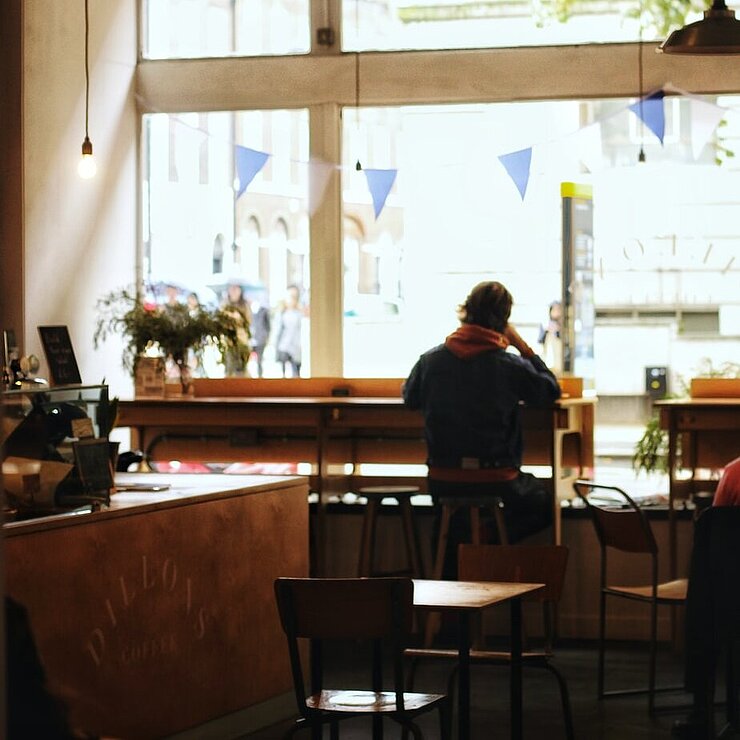Awakening and reactivating
With reopening afoot, it felt the right time to reboot Restaurant Marketer & Innovator, our community for those involved in the marketing, development and strategic decision-making of eating and drinking-out brands. It seems like an age has passed since we last came together, in January 2020, for the European Summit that brought together leaders from across the world to discuss campaigns, creative, technology and trends.
It’s fair to say much of what was discussed on stage and in the wings, quickly went out of the window as the pandemic took grip, but looking back at our round-up of the event, some key themes and ideas have most certainly moved from being in their infancy to fully fledged. Perhaps most notably was the sprouting idea of restaurant-driven food boxes, which a few had trialled, but was far from gaining mainstream status. Fast forward to today and as we have seen businesses from independent Michelin-starred venues to major global brands have pivoted to this model as way of continuing to keep team members on the books, engaging their customer base and, ultimately for some, surviving. There are far too many to do justice in a few sentences, but I’ve tried many, the highlights have been Honest Burger, Elite Bistros, Adam Handling’s Hame, La Goccia at Petersham Nurseries, Hawksmoor, Rick Stein and the Letterbox Cocktails from Yummy Pubs. All were exceptionally well delivered with real thought having gone into creating an experience, which is really important to ensure the consumer feels they are getting value.
Ever since the first Restaurant Marketer & Innovator, delivery has been at the forefront of discussions about innovation, which should come as no surprise being the greatest disruptor to the traditional restaurant operating model in the past decade. The pandemic has been an accelerator here, in many ways, but perhaps most notably as a motivation for changing mindsets. I clearly remember one chef-patron tweeting with vehement protest against the idea of ever doing takeaway, the same chef is now tweeting with pride and passion about launching their new delivery kitchen model.
Speaking to marketing and development leaders, these two areas have often been cited as their biggest workload of the past year, helping their businesses pivot, understanding the competitive landscape and building a proposition their customers would embrace and love. Many have even found new customers far from the bricks and mortar of their physical stores, extending the reach of their brand.
Other common focuses of these teams have come in supporting or leading internal communication, continuing to engage customer audiences on digital channels, focusing on digitisation of the customer journey and using the downtime to review and update branding, assets and, where budgets have allowed, refreshing sites.
Moving into the reopening stage, there are many challenges ahead, albeit ones that my industry colleagues can’t wait to tackle head-on. As each of the home nations allow for reopening on their own timescales, it will be the role of the marketing teams to re-engage their customer base, which may well have disengaged during the many lockdowns. We are hearing from many businesses that forward bookings are looking incredibly strong but as we might expect, the normal peak of businesses over the weekends have returned because most will be back to work, creating another challenge of how to spread custom over the full week, compensating for reduced capacity with continued physical distancing regulations. Last summer, we had the benefit of Eat Out To Help Out supporting this message. I’m already hearing of many brands launching their own versions after the initial pent-up demand drops away.
Another key question that is on many people’s lips is what to do about pricing, do we raise prices based on the increased food cost, increased demand and reduced capacity – or stick closely to previous pricing? So far, I’ve heard of both strategies, with some focusing on driving volume with commitment to previous pricing and great value, while others feel they need to make up for the lost opportunities and growing debts of the past year.
To me, it is clear the businesses that had diversified and digitised before the pandemic were the ones that have been less impacted than those set in a one format, the traditional hospitality model. With much excitement about reopening our doors and getting trading again face to face, it will be interesting to see how many companies will decide to continue to drive the new revenue streams when the pressure of their physical businesses returns.
We invited a number of leading marketing and commercial leaders to share their experiences of the past year and focus for the coming months, to give an insight into the priorities of different businesses across different sub-sectors and size of businesses within the multi-site hospitality industry, which you will discover below.
To end on our own happy note, we are pleased to announce that the Restaurant Marketer & Innovator European Summit will be back in January 2022, so keep your eyes open for our save-the-date announcement later in the year. This will see the return of our awards, 30 under 30 recognition programme and a two-day conference. We’ll also be interviewing key leaders for a short series here at Propel over the coming months too, so watch this space.
James Hacon is co-founder of Restaurant Marketer & Innovator and an award-winning hospitality brand and growth strategist

